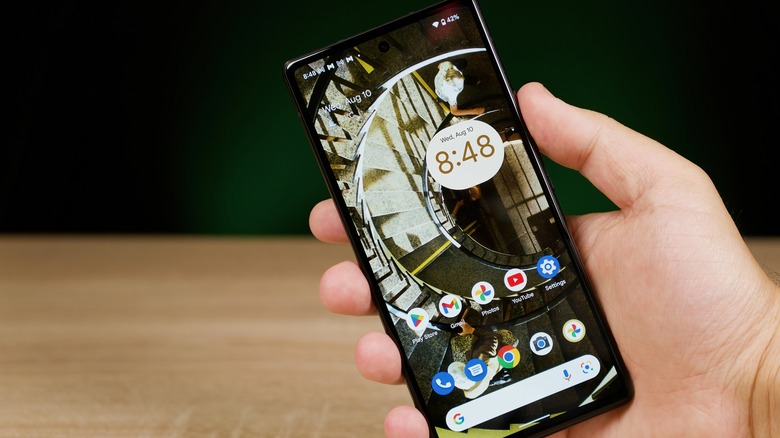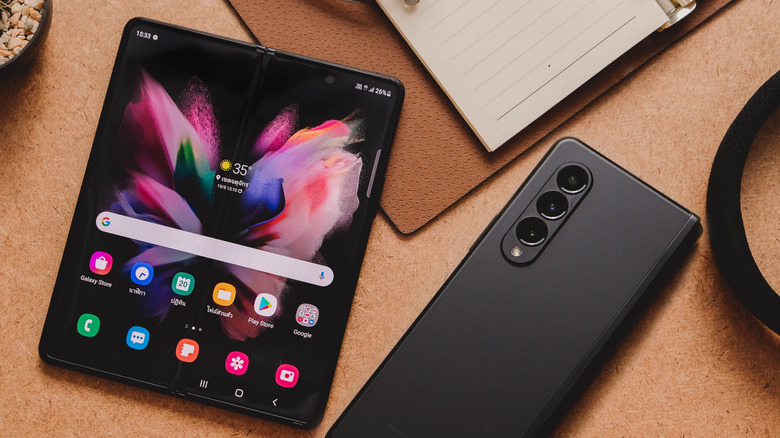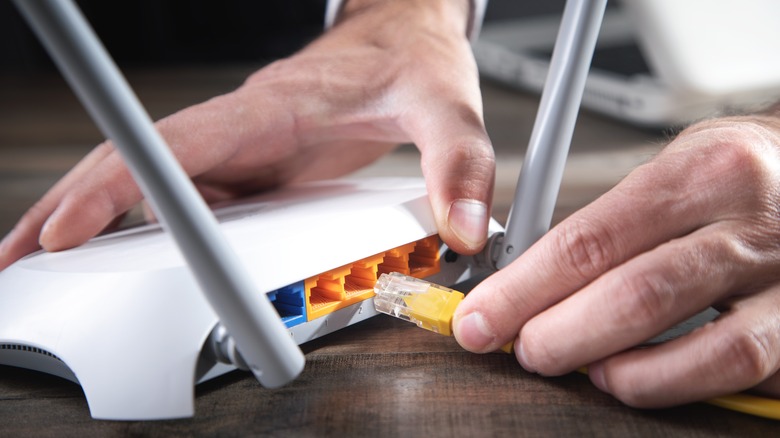Why Your Android Phone Keeps Losing Network Connection And How You Can Fix It
If you're using your Android phone and find that you suddenly can't view web pages, are stuck on a loading screen, or are unable to upload posts on your social media apps, then the issue could be due to a number of things. The most probable cause is the lack of an internet connection, which is fairly easy to diagnose and fix.
According to Google, the catch-all solution for most network connection problems is often the simplest one: restarting your Android device. This essentially refreshes existing connections and gets rid of any hiccup that caused it to glitch in the first place. You can also try turning Wi-Fi and mobile data off from your notifications tray by swiping down twice on your phone screen, tapping the appropriate buttons, and then tapping them again to turn them back on after 15 to 30 seconds. If none of these general troubleshooting methods work, then it may be time to explore other reasons for your Android phone's failure to maintain a stable internet connection.
It could be limited internet service
Android phones need either mobile data availability or a stable internet connection, usually through a Wi-Fi source. If you're in an indoor location where you know there's a Wi-Fi router, and you experience a connection that keeps dropping, consider moving closer to the modem — to the same room as the device or even right next to it — and see if your connection stabilizes. Check the modem or router cables and make sure everything is appropriately connected. Assuming that your internet provider has no scheduled service interruptions, you should automatically be connected to the internet.
When you're outdoors, relying on mobile data to connect to the internet, and having trouble getting anything to work on your Android phone, you might have a weak signal or lack cellular service at all. Look at the top-right corner of your phone screen and check for signal strength and a data indicator such as 2G-5G, H, or LTE. If you can't see either, you might need to turn Wi-Fi off so it shows up. Again, try to switch mobile data on and then off to see if refreshing it will improve things. If your signal strength is low and you don't see a signal data indicator, you may be in a dead zone. Try relocating to a different area and check your signal again.
You can also check your data usage. If you've exceeded your monthly limit — assuming you've set one or have been assigned one through your phone carrier plan — you may experience intermittent internet connection. You can try going to "Settings," then tap on "Mobile network" to check "Data usage" and see if you've hit your data cap. These menus may be worded differently across Android phone brands. If you are unsure whether you still have mobile data available, contact your phone service provider.
Your phone might be auto-connecting to a Wi-Fi network with bad signal
Actually, unless you're somewhere in the mountains or on a remote island, the odds of you being in a location that has no data coverage are slim. Most metropolitan areas ought to have a wireless network available nearby. If you are connected to a Wi-Fi network that's not working, you can try switching to a different network. If there are none in the immediate area you can access (most wireless networks require a password) turn off Wi-Fi and see if mobile data can get you through your internet needs.
Some Android phones have the capability to connect to any Wi-Fi network automatically, regardless of connection quality or speed. It's an advanced setting that allows your phone to quickly switch from a Wi-Fi network with a patchy signal to one that is stronger and more stable. Android phones that have the feature enabled can yield great results, but in some cases, they might latch on to wireless networks that are not working properly. If you have a Samsung Galaxy phone, you can try turning automatic networking switching off by following these steps:
- Launch your phone's "Settings" page and go to "Wi-Fi."
- Tap the three-dot icon in the top-right corner of the screen and select "Advanced."
- Tick the box next to "Smart network switch" to remove the check mark and disable it.
- If you see a confirmation prompt, hit "OK" to finalize.
Other Android phone manufacturers may have a similar feature that you can try disabling to see if it improves your phone's Wi-Fi connection retention. If it does, it will probably be in the "Advanced" section of your phone's Wi-Fi preferences, similarly named. For instance, on some Motorola phones, users can disable "Avoid bad Wi-Fi connections."
Your Wi-Fi settings might be out of date
If your Android phone is having issues detecting your usual Wi-Fi network, you may need to manually select it from a list of connections you've previously accessed. If you have a long list of saved networks on your device, it may cause frequent interruptions with your internet connection. Maintain the upkeep of your phone's Wi-Fi page and remove networks that are outdated or no longer being used by tapping the "i" icon next to the network name and choosing "Remove this network." You can also do this to the network you're trying to connect to, provided that you know the password to it so you can add it again.
Another way to fix Wi-Fi connection problems on your Android phone is to reset its network settings. Launch your device's Settings app and do the following:
- Go to "System settings."
- Scroll down and tap "Back up and reset."
- Hit "Reset phone," then choose "Reset network settings."
This will essentially wipe out all previously saved Wi-Fi, Bluetooth, and mobile network settings on your Android phone, so you can start from scratch. You may be asked to key in your pin or provide your preferred identity verification to confirm the action.
If you are in a location where you have access and permission to fiddle with the Wi-Fi router, you can try rebooting it by disconnecting the power cord from the back of the device and plugging it back in after a minute or so. Doing this should clear any issues affecting your router's functionality. Once all the appropriate lights are blinking on the device, that's a sign that the internet's back, and you can try reconnecting your Android phone once more.
If none of these solutions work, contact your internet service provider or mobile phone carrier for additional guidance.



